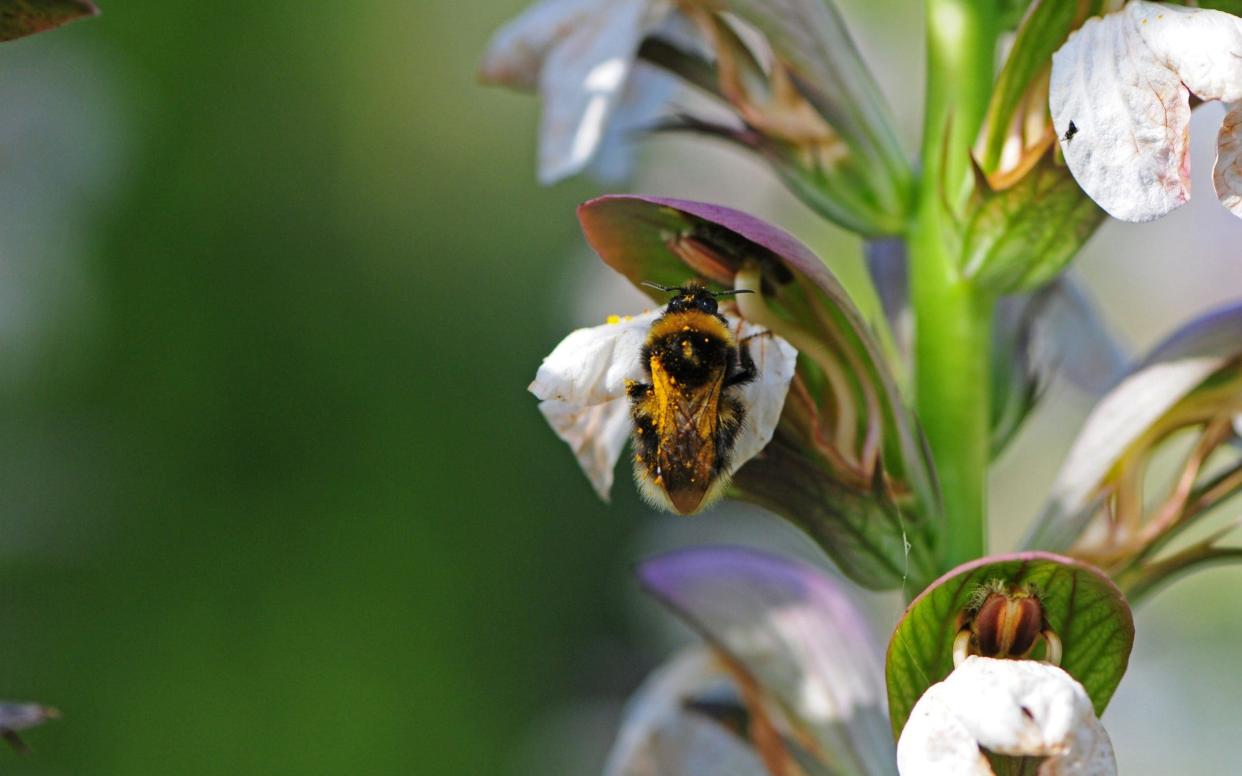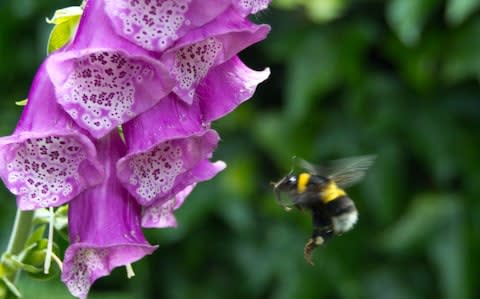Ken Thompson: the quiet battle for pollen between flowers and bees

‘All the flowers in the field were made to please the bees.” Or, at least, so said that great 20th-century philosopher Freddie Garrity, in Freddie and the Dreamers’ 1963 hit You Were Made For Me. Freddie’s opinion certainly matches most bees’ view of the world. The flowers might agree too – up to a point. The problem is that flowers and bees have a difference of opinion about what pollen is actually for.
Plants are clear on this: pollen is the male gametes, the conduit for male genetic information, and nothing is more important than getting it safely from the anther of one flower to the stigma of another. For bees, on the other hand, pollen is a convenient, portable, high-protein food source, essential for feeding to larval bees.
Pollen is essential for both bees and plants to raise the next generation. To understand why a conflict arises, we have to understand how bees collect pollen. Bees use their forelegs and mandibles to strip pollen from the anthers, and then transfer it to special storage structures on the hind legs or the abdomen; pollen groomed from the rest of the body also ends up here. Often mixed with nectar and saliva, this pollen load is sticky and quite unlikely to be brushed off on a stigma. Given the chance, bees can easily harvest all (or nearly all) the pollen from a flower, leaving none for pollination.

For the flowers, this is bad news. They don’t mind sharing their pollen with bees, but they want some of it to end up somewhere on the bee’s body that is safe from being groomed, and where it’s likely to brush off on the stigma of the next flower visited; in short, at least some pollen needs to be protected from being simply taken away and eaten.
Flowers have evolved two ways of doing this: offering nectar to divert the interest of bees away from pollen; and hiding the pollen so that it’s difficult to collect, but likely to end up somewhere where the bee doesn’t immediately notice it.
This second option has led to the evolution of the classic two-lipped “bee flower”. Such flowers have a lower lip, or “floor”, where the bee lands. Anthers and stigma are under an upper lip, or “roof”. As a bee pushes into the flower to get to the nectar, pollen is deposited on the bee’s back, then brushed off on the stigma of the next flower entered. The basic design both makes the pollen hard to collect, and applies it to the bee where it can’t easily remove it, and where it often isn’t easily noticed.
This type of flower has evolved separately on many occasions, and occurs in tens of thousands of species, many of them familiar to gardeners; examples include acanthus, roscoea, canna, digitalis, horse chestnut, paulownia, impatiens, lobelia, linaria and abelia. Some whole families, such as the mint and orchid families, are characterised by two-lipped flowers. In fact, this flower shape is a reasonable guide – though not a perfect one – to a good “bee flower”.
Variations on the basic design are numerous. To give bees something else to worry about, and make them even less likely to notice the surreptitious deposits of pollen on their backs, some flowers have partly closed the entrance, meaning the bee has to force its way in. The obstruction can be formed from the roof (eg iris and phlomis) or the floor (eg nemesia).
A particularly interesting variation is found in many species of salvia. Here there are two stamens, but only one anther of each is fertile, and this fertile anther is situated high above the floor, much too high to contact the back of a visiting bee. The second anther is sterile, and the tissue that connects the two extends downwards into an arm that more or less closes the entrance to the flower. Thus the two anthers form a lever mechanism; as the bee pushes against the lower sterile anther, the whole arrangement pivots and presses the fertile anther on to its back. As the bee backs out of the flower, everything returns to its original position.
Two-lipped flowers look like the flowering plants’ best option for using bees to transport their pollen, while at the same time preventing them from stealing all of it. But there’s nothing to stop either partner cheating, and what looks like a harmonious partnership is more like an arms race with each side constantly trying get more than its fair share out of the arrangement.
Ken Thompson is a plant biologist with a keen interest in the science of gardening. His latest book, The Sceptical Gardener, is a collection of his columns for The Daily Telegraph. Visit books.telegraph.co.uk


